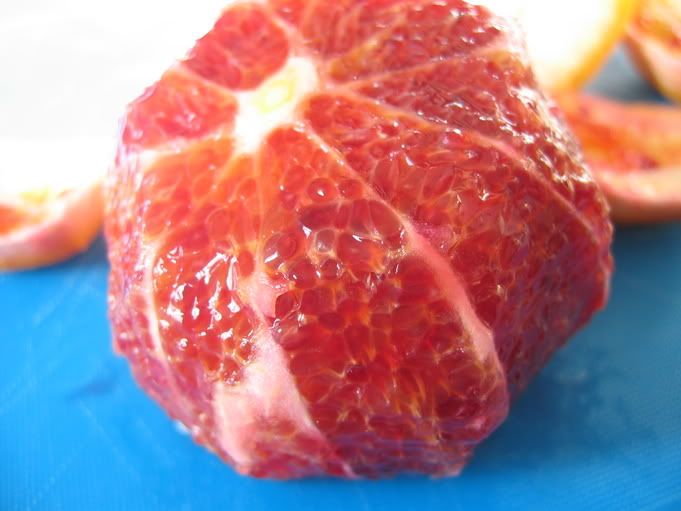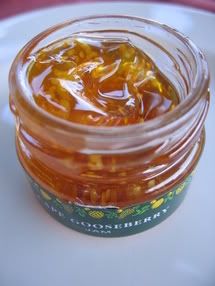Blood Oranges
 Nothing takes me back to the crisp chill of a North Italian winter like the taste of a blood orange.
Nothing takes me back to the crisp chill of a North Italian winter like the taste of a blood orange.From August 2004 to June 2005 I studied at the University of Bologna, I lived in a flat with Italian and American students, and, for the first time, I cooked by myself, for myself. An interesting and challenging and deeply fulfilling experience, which I hope to revisit here when the mood strikes me. Like today.
A huge part of cooking in Italy is of course shopping for food. I would buy my groceries daily, at a variety of different stores. Italian eating and cooking is very seasonal, and the cornucopia of summer fruit and vegetables just wouldn’t be there at my fruttivendolo (greengrocer) in winter. It really brought home how artificial the year-round offerings of American and South African supermarkets are. In Italy there would be a lot of green, leafy veg like chard and kale, and root veg like squashes, but nary a strawberry or asparagus shoot. Which sometimes led to traitorous longings for Wholefoods and Pick ‘n Pay! Despite these occasional falterings in my loyalty to seasonal, locally grown produce, the saving grace of an Italian winter was the citrus. And of all the lemons and naartjies (clementines) and oranges, the tarocco ruled supreme.
Grown in Sicily, the tarocco is the blood orange to end all blood oranges. I can’t tell you what makes it better than all the other blood oranges, but it just is: tastier, juicier…bloodier! I had never seen nor tasted a blood orange in South Africa, but on my first bite in Italy, I was sold. My friends and I would stop by at a fruttivendolo after university classes, and carry ice-cold tarocchi (plural of tarocco – one is never enough!) home in our coat pockets. We’d sit around someone’s kitchen table, peeling and eating until our fingers were dyed blood red. I could never lick my fingers fast enough to catch all the juice…
So in celebration of those memories, I bought some California blood oranges yesterday at the supermarket. They were not as good as my memories of tarocchi, but a refreshing winter treat, nevertheless.

Blood oranges have a strong, bold flavour which is richer and tarter than your run-of-the-mill navel orange. While their skin usually looks very innocent, their disconcerting name comes from their magnificent, colourful flesh, which can range from orange to a bruised, potent purple-red. Usually the flesh will be a mottled mix of orange and scarlet, but I have often come across totally orange or totally crimson fruits: no two are alike. The flesh is delicious by itself, cooked with fish, chicken or duck, tossed in an arugula (rocket leaf) salad, eaten with chocolate or, as I did this morning, stirred into my oatmeal with some honey.
If you visit Italy in the winter months, don’t be surprised if you order spremuta d’arancia (orange juice) at a café and receive a glass of bright red juice. The Italians take the initiative and use blood oranges whenever they are in season. Be smart, and follow their example.
Categories: Ingredients, Italy

